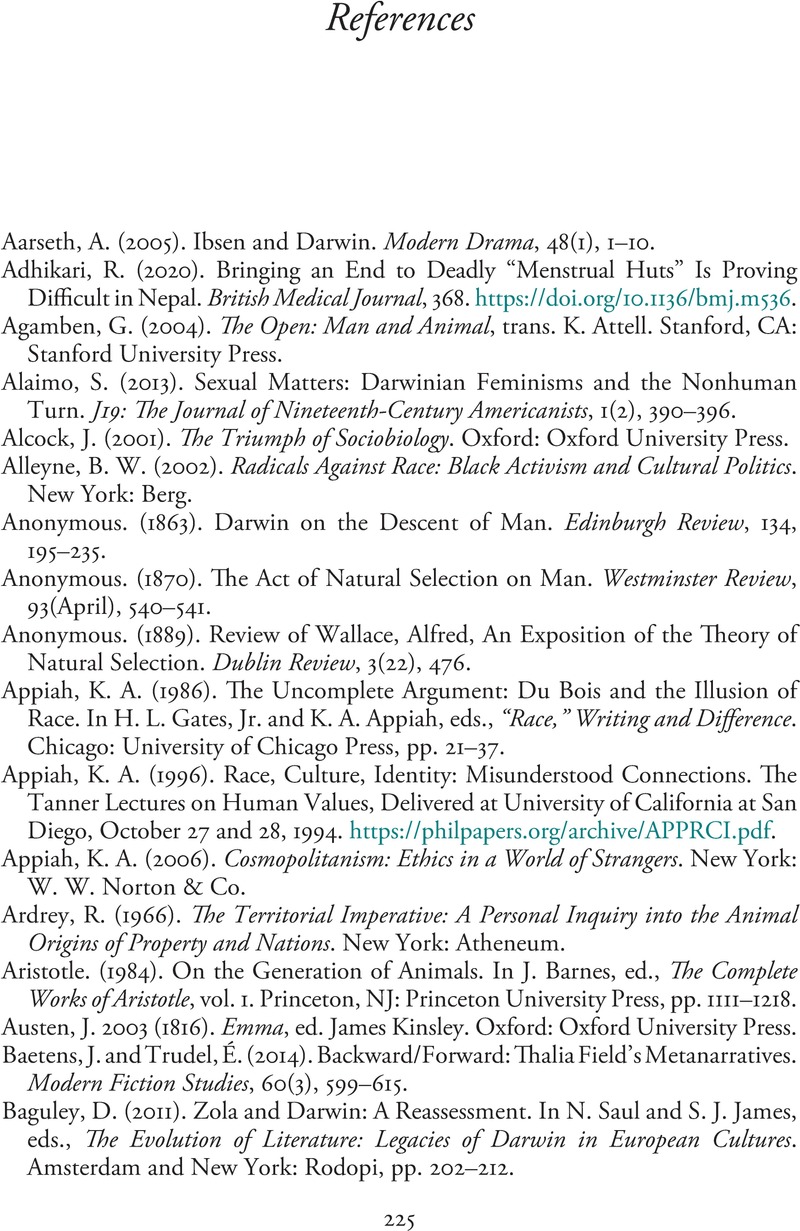References
Published online by Cambridge University Press: 01 December 2022
Summary

- Type
- Chapter
- Information
- After DarwinLiterature, Theory, and Criticism in the Twenty-First Century, pp. 225 - 249Publisher: Cambridge University PressPrint publication year: 2022

